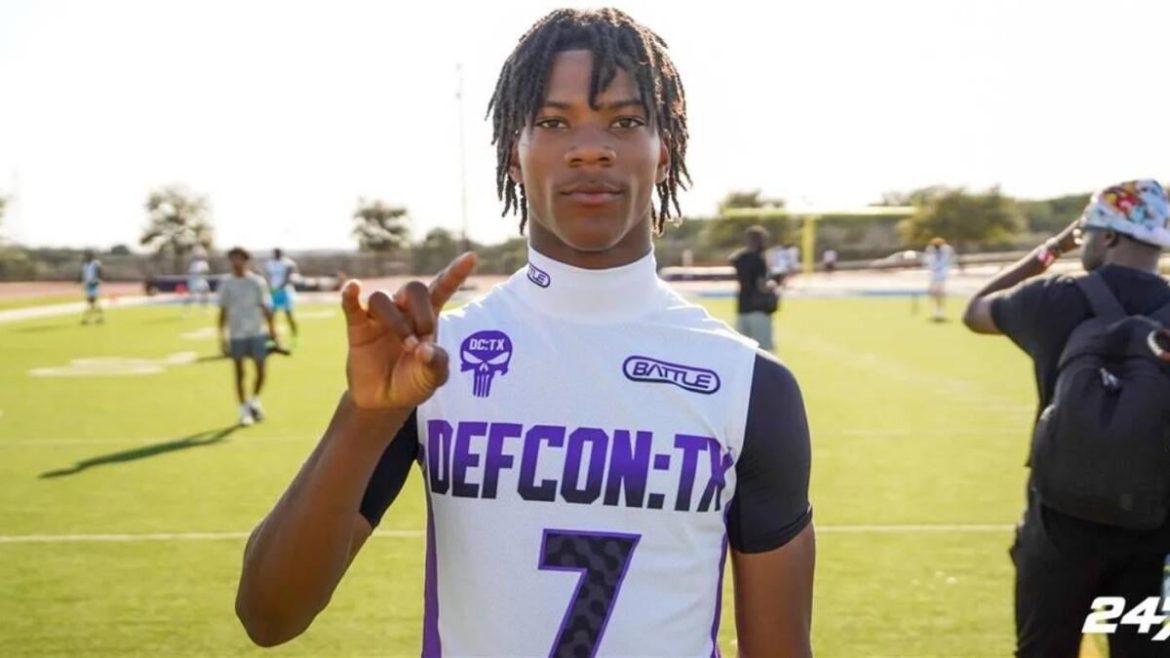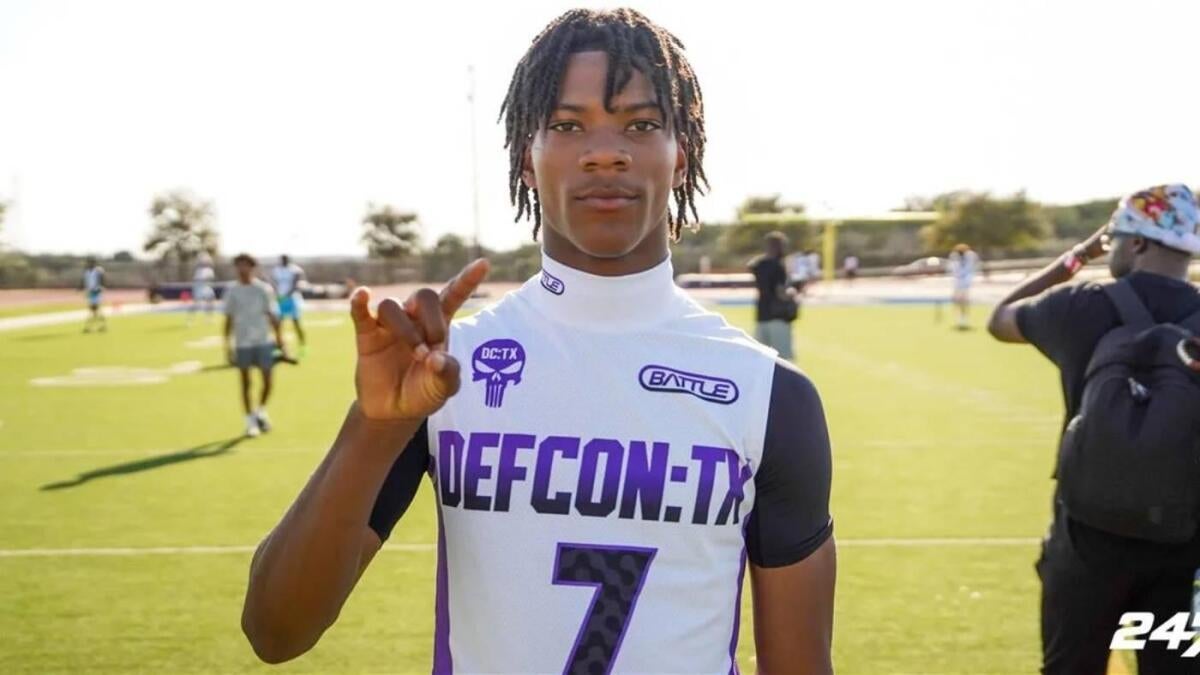The dynamic recruitment saga surrounding Jermaine Bishop Jr. paints a vivid picture of a talented athlete rapidly ascending the ranks of college football prospects, with a compelling story that captures the essence of modern recruiting battles. Central to this narrative is Bishop’s rapid rise as an elite dual-threat athlete, his strategic positioning amidst a fiercely competitive recruitment landscape, and the broader implications for both Texas and the future of recruiting in the sport.
Athlete Profile and Early Achievements
Jermaine Bishop Jr. hails from Willis, Texas, a testament to his roots and in-state appeal that have become increasingly significant in recent recruiting cycles. Standing at 6 feet tall and weighing approximately 170 pounds, Bishop embodies the prototypical versatile athlete capable of excelling on both sides of the ball. His 2024 junior season statistics exemplify his prowess: 83 receptions for 1,565 yards and 18 offensive touchdowns, complemented by 26 tackles, three interceptions, and six pass deflections defensively. These numbers underscore his value as a multi-dimensional player whose skill set is adaptable to multiple roles, making him a coveted commodity for college programs seeking versatile contributors.
His cousin, Michael Bishop, a former Kansas State star quarterback, underscores the athletic lineage and hints at potential future leadership qualities. Such familial athletic pedigree often plays a critical role in a recruit’s development and perception among college recruiters, adding an extra layer of intrigue and expectation.
The Significance of In-State Recruitment
Bishop’s commitment to the Texas Longhorns signifies more than just a top-tier athlete choosing a major program; it reflects Texas’s strategic emphasis on securing local talent. As one of the top prospects in the 2026 class, his decision signifies Texas’s deliberate effort to bolster its roster with in-state stars, aligning with the broader trend among top programs to emphasize homegrown talent. This approach not only fosters local fan engagement but also demonstrates the Longhorns’ commitment to developing players familiar with Texas high school football styles and culture.
The campus-to-canton narrative, emphasized through platforms like the CFB Winning Edge Podcast, highlights how prospects like Bishop are integral to programs’ long-term success. The focus on developing young talent early ensures that programs can build sustainable pipelines, especially with athletes who have proven their capability on significant stages in high school.
The Dual-Role Athlete and the Two-Way Potential
One particularly intriguing aspect of Bishop’s profile is the discussion about his potential as a two-way player akin to Travis Hunter, who became renowned for his exceptional ability to excel on both offense and defense at the college level. Bishop’s own aspirations to seek a role as a wide receiver or defensive back demonstrate his desire to maximize his versatility. His extensive junior stats and highlights support the notion that he could develop into a two-way threat, much like Hunter, providing a strategic advantage for the Longhorns.
This aspect of Bishop’s game is noteworthy because it embodies the evolving nature of college football, where athletes are increasingly valued for their flexibility and multifaceted skill sets. Programs are embracing athletes who can impact multiple phases of play, giving coaching staffs tactical options and creating more dynamic units on both sides of the ball.
The Competitive Recruitment Landscape
Bishop’s recruitment has been active and competitive, with notable interest from programs such as Texas A&M, Florida, USC, and others. The fact that he committed to Texas over these storied programs underscores the program’s strength and appeal, especially in a highly contested recruiting environment. His decision aligns with Texas’s recent momentum, including ending 2025 with the nation’s number one recruiting class, as reported by various scouting and recruiting outlets.
Further, the mention of Bishop’s potential to follow in the footsteps of notable two-way players underscores how high his ceiling might be regarded within college football circles. His own words about feeling like a top priority reflect how Texas has positioned itself as a leading contender for his commitment, capitalizing on the importance of local stars to galvanize fan support and boast recruiting success.
Broader Implications for Texas and College Recruitment
Texas’s ability to secure a commitment from Bishop exemplifies their strategic focus on both talent and regional alignment. His signing emphasizes the significance of homegrown talent in strengthening team chemistry and fostering a culture of success rooted in local pride. Furthermore, Bishop’s highlight as a versatile athlete fits perfectly within Steve Sarkisian’s offensive and defensive schemes, which are designed to leverage athleticism and versatility.
The recruitment victory also signals Texas’s broader push to maintain its competitive edge nationally. As the Longhorns continue to build a formidable class, incorporating athletes like Bishop ensures they are not just filling rosters, but cultivating elite athletes capable of making immediate impacts and long-term contributions.
Future Outlook and Development Path
Looking forward, Bishop’s development trajectory appears promising. His junior season stats, athletic lineage, and versatility suggest that he could evolve into a key fixture for Texas’s defense or offense, depending on how his skills are best utilized at the college level. His ambitions to assert a two-way role at Texas align with a broader trend among top programs emphasizing position flexibility, which typically enhances a player’s value and impact.
In addition, his journey exemplifies the dynamic recruitment process in modern college football, where recruiting is a strategic battle often involving regional ties, athlete versatility, and program culture. Bishop’s story underscores the importance of early talent identification and the allure of in-state programs, which continue to dominate recruiting narratives.
The Importance of Trust and Culture
Texas Head Coach Steve Sarkisian’s approach to sharing personal struggles and fostering trust is a subtle but critical element in recruitment and player development. Building trust with recruits like Bishop can substantially influence their commitment decisions, especially when coupled with a vision for their development, both as football players and as individuals. Sarkisian’s transparent leadership style appears to resonate with players who seek a program that values integrity, growth, and shared success.
Conclusion: A Glimpse into the Future of College Football Recruitment
Jermaine Bishop Jr.’s commitment to Texas isn’t merely a headline; it’s a testament to how modern recruiting intertwines athletic talent, regional loyalty, versatility, and team culture. His story exemplifies the multi-layered decision-making process that today’s top prospects undertake, balancing personal aspirations, family legacy, and strategic program fit.
As college football continues to evolve, athletes like Bishop symbolize the new era—players who are multi-dimensional, regionally rooted, and highly sought-after. Their development will shape not only the teams they join but also the landscape of the sport itself, where versatility and cultural fit are increasingly valued. Bishop’s journey offers a compelling glimpse into the future of recruiting: strategic, nuanced, and driven by a blend of raw talent and holistic player development. Texas’s investment in this promising talent underscores their ongoing commitment to building winning teams with athletes capable of transcending traditional roles, embodying the very essence of modern college football excellence.





